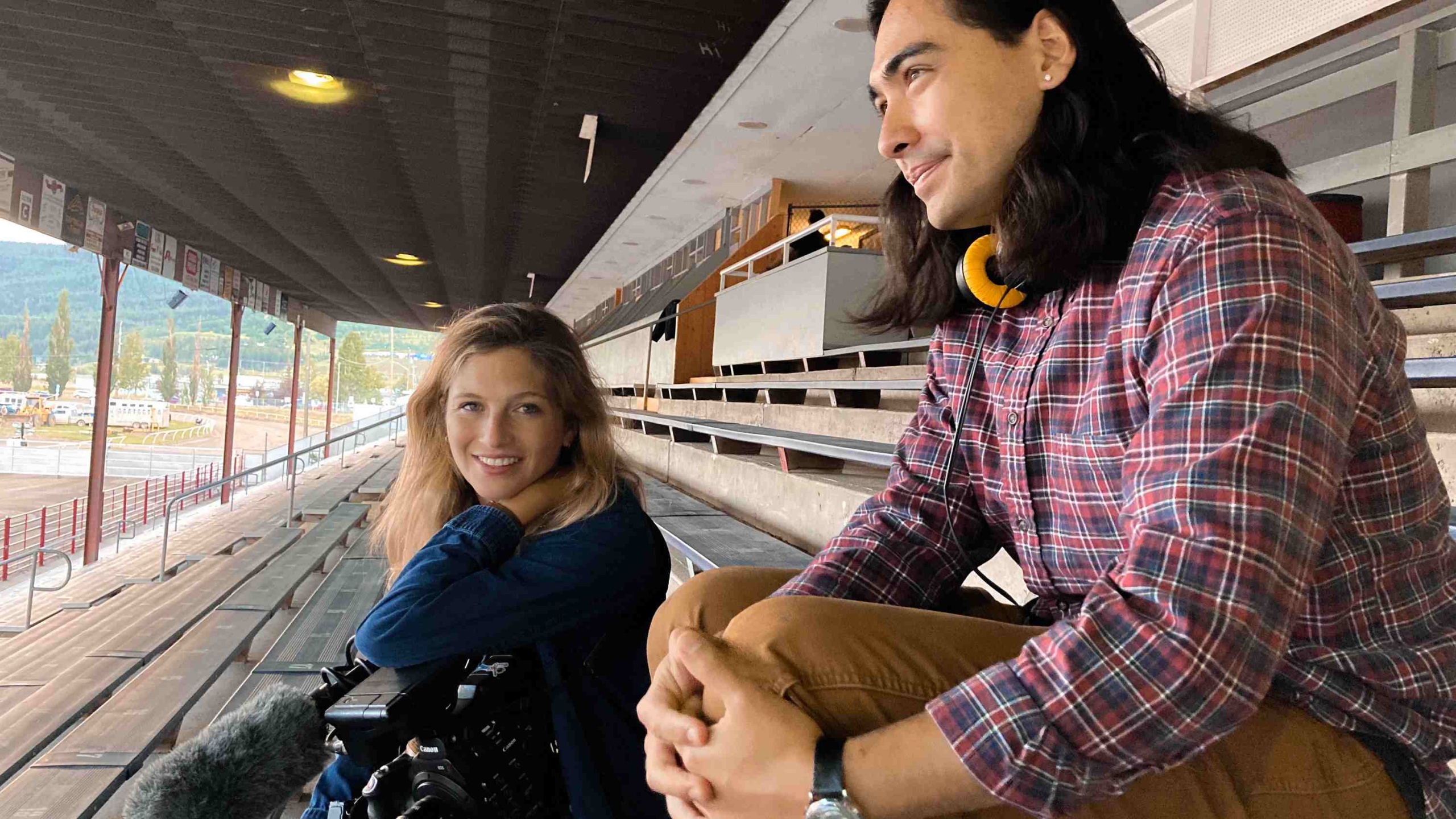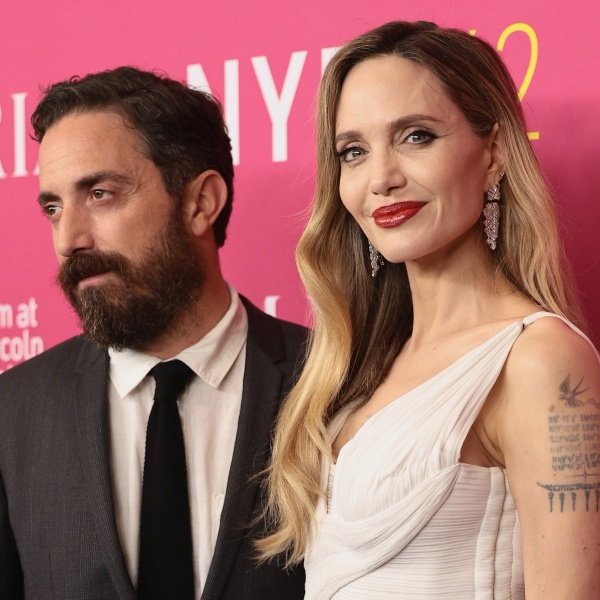There’s a scene in the documentary “Sugarcane” between co-director Julian Brave NoiseCat and his father Ed Archie NoiseCat that is as emotionally raw as anything you’ll see on screen this year. It’s a conversation about the unspoken and devasting trauma the father experienced as a child, and the lasting impact it had on his own shortcomings as a father. It’s a glimpse into a moment so deeply personal and private it is hard not to be aware of the presence of the camera.
“I’ll never forget the moment Julian confronted his dad about abandoning him,” said co-director Emily Kassie, who, along with Noisecat, was a guest on an upcoming episode of IndieWire’s Toolkit podcast. “It was one of the most visceral experiences of my life. I felt like a participant and an observer. What I remember most was hearing Julian’s heart beating through his microphone.”
Noisecat’s father Ed is one of many survivors of the 139 Indian residential schools in Canada, where for decades (the last school was shuttered in 1997) the Catholic Church forced Native children to separate from their families, taught them to assimilate, and physically abused them, all in an effort to destroy the culture of Indigenous communities. The discovery in recent years of unmarked graves outside residential schools has triggered investigations by Native communities – like the one by Williams Lake First Nation featured in “Sugarcane” – to take the steps toward reconciling with the past and start to heal.
When NoiseCat was on the podcast, he discussed how his father was typical of many survivors in his community, who buried their trauma and remained silent. In the first year of filming “Sugarcane,” Noisecat was determined to keep himself and his family’s story off-camera, so much so he actively hid what he and his family were experiencing from Kassie and team, as the devastating cycle of generational trauma continued to take its toll.
“My brother (my cousin biologically, but I consider him my brother) Stephen died and I delivered the eulogy at his funeral –– this was one month after we began filming,” said NoiseCat. “And in the course of filming ‘Sugarcane’ I’ve attended 10 funerals. That is the continuing death toll of Indian residential schools in my view and in the view of our community.”
When NoiseCat left for his cousin’s funeral his hair was down to his waist, he returned with it to his ears. “Everybody was like, ‘Whoa, what just happened?’” recalled NoiseCat of the “Sugarcane” team’s reaction to his haircut for the funeral. “I didn’t tell Em [about the funeral], I didn’t tell the documentary [team]. It was very important to me, at first, to not be living this in some sort of sense for the camera, or because there was a camera there.”
No right-minded person would argue with the importance of telling personal stories, nor the need for investigative journalism to uncover truths, or the psychological benefit of NoiseCat confronting deeply buried trauma. The role the camera poses is a trickier question, though. As Noisecat alluded, there is a performative aspect to “living this for the camera,” especially intense emotional experiences like those he would eventually share in “Sugarcane.”
“Em [Kassie] is the first one who helped me think about it, because at first, I’ll just be honest with you, the presence of the camera to me was a very scary thing, and was part of my hesitance around going there with my own story,” NoiseCat said of how his thinking evolved and deciding to become a participant himself. “I think on the most basic level, the camera tells people you matter, and Native people have been told for decades, if not hundreds of years, that we do not matter.’”
Prior to “Sugarcane,” Kassie was a journalist for 10 years, including a stint as the creative director of HuffPost’s online magazine, Highline, where she met NoiseCat, then the Native issues fellow. While that background was important to making “Sugarcane,” there were aspects of the investigative journalism profession Kassie was looking to shed, embracing not only the ability to adapt the personal point-of-view of making art, but also the personal relationships she believed were vital to tell this story.

“In a newsroom there are certain parameters of what you can and can’t do, how close you can get, how much time you can spend, how much a of personal relationship you can have,” said Kassie. “And to do the story we wanted, we had to live with people, and embark on the journey together. These are real friendships and connections. I mean, they’re literally familial for Julian.”
Kassie would live with one of the film’s principal subjects, Chief Rick Gilbert. According to Noisecat, she would be Gilbert’s emotional support system on his trip to the Vatican in the film. Kassie argued that when a people’s story has been suppressed, especially by major institutions like the government and the Catholic Church, it’s important to “show up with a lot of compassion and space and say, ‘I’m here just to listen and to follow your story as it’s happening,’ as it can create this kind of extraordinary empowerment agency for people to take ownership of this moment and to free themselves of the burden they’ve been carrying.”
This need to be present both as supportive friend, but as filmmakers, had a direct influence on the relationship between camera and participant.
“That continuing death toll of Indian residential schools [that] we were trying to capture [was] not a sit-down talking head archival documentary, but as a vérité documentary that’s set in the present, that follows events in the present and the ongoing legacy of the fact that people are still dying from it,” said NoiseCat.
It’s a lesson Kassie learned the hard way early on with Gilbert during the film’s first-and-last traditional sit-down interview. “Rick carried this horrible truth that was really eating at him for his whole life,” said Kassie. “He ended up sharing so much, so quickly, that he clammed up right away, and we decided never to do an interview again because of that.”

Kassie said she told Gilbert they didn’t need to use the interview, he didn’t even need to be in the documentary. “’We can throw it away. We just want to get to know you, and if you want [to] continue to get to know us,” Kassie told Gilbert. “And over time, we built up the trust, and he was able to unburden himself of this and to take ownership of his own story.”
Both Noisecat and Kassie say they saw a “radical change” in Gilbert as a result of this unburdening, which is also evidenced in the third act of the film. The co-directors also believe it is evidence that, yes, the camera can be used as a tool to help documentary participants to heal. Noisecat sees it in reflecting on the newfound perspective and relationship he now has with his father as a result.
“He’s my best friend in the whole world, that is at the end of the day what it is to be family,” said NoiseCat. “Life is complicated and messy and on a basic level, I don’t fault him for his shortcomings as a parent because our people were taken away the right to be parents and to be parented, so of course people didn’t know how to do it.”
Look for IndieWire’s Toolkit episode with Julian Brave NoiseCat and Emily Kassie on Spotify, Apple, and other major podcast platforms later in the month.





